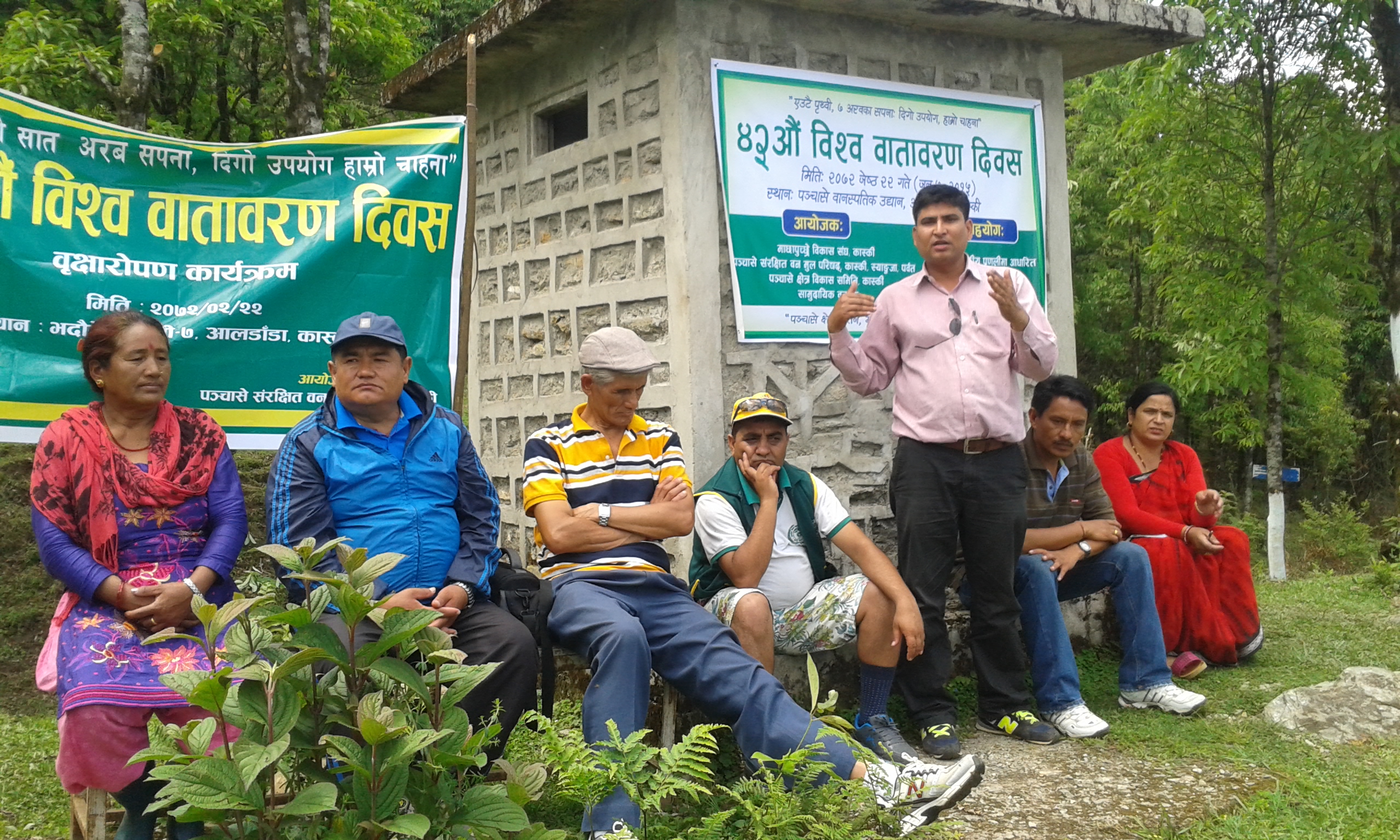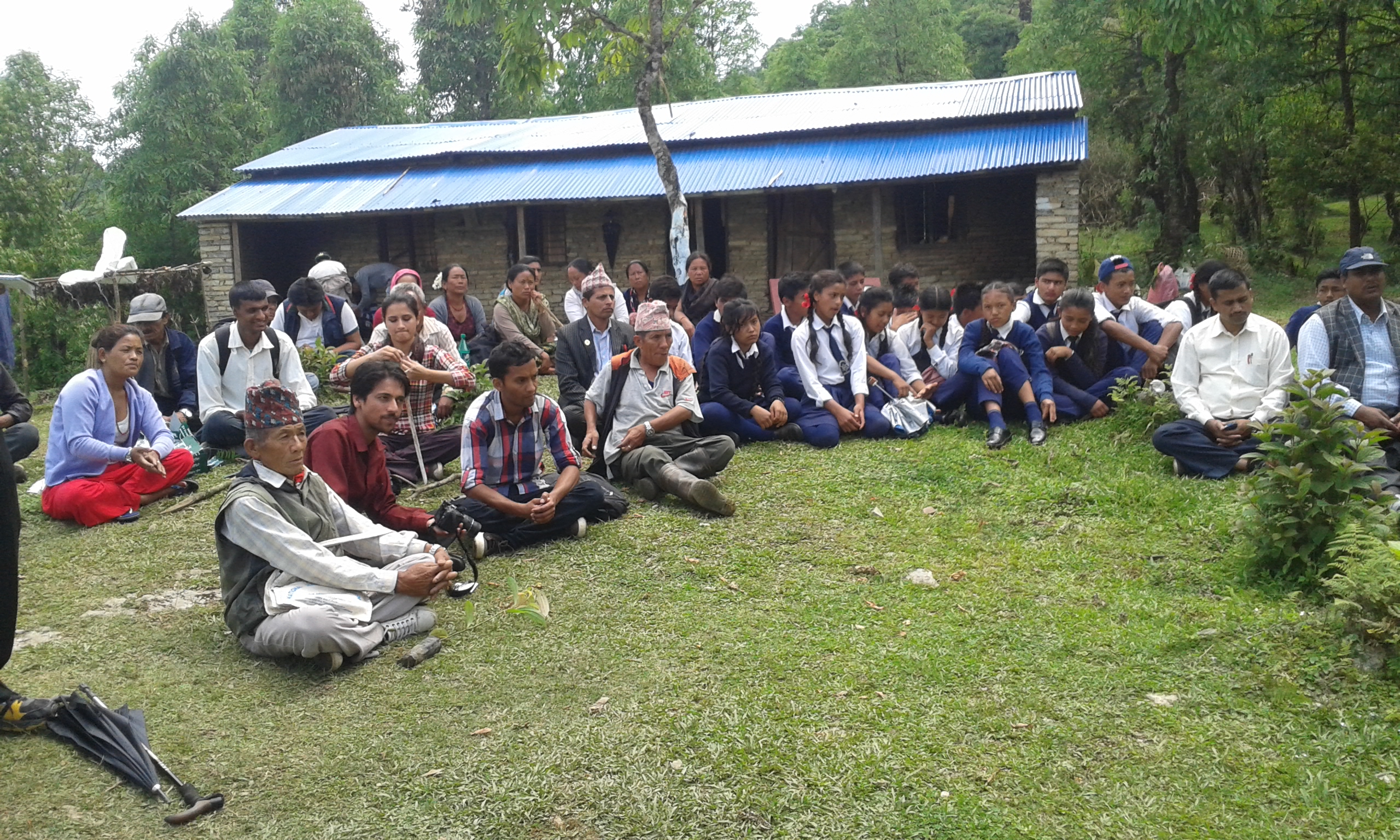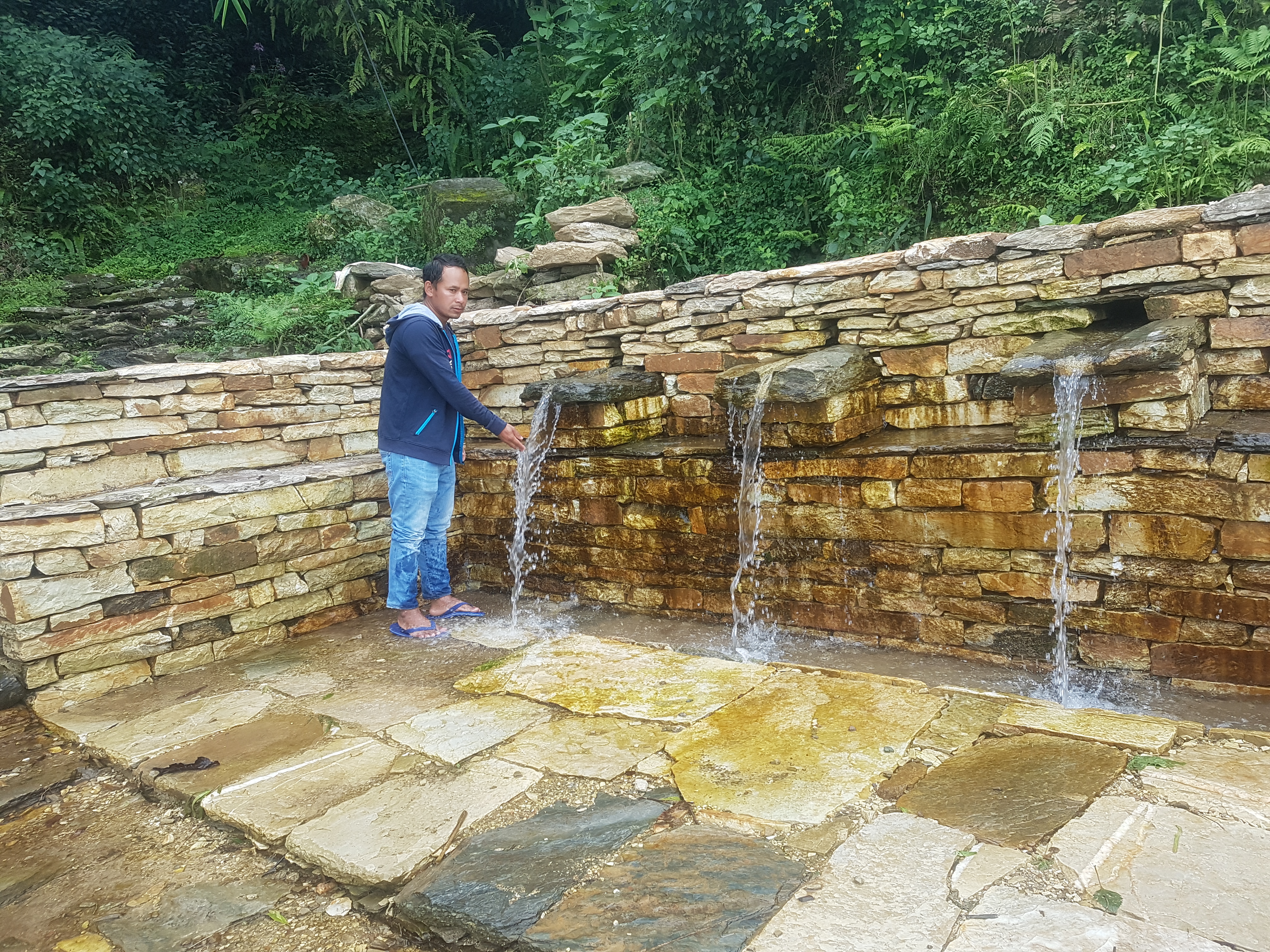



Dado que la Adaptación basada en los Ecosistemas (AbE) era un concepto completamente nuevo para las partes interesadas y las comunidades, era esencial concienciar sobre la AbE y sus beneficios potenciales. Antes, el modelo de desarrollo de las comunidades era la deforestación y la sobreexplotación de especies vegetales, lo que repercutía negativamente en la biodiversidad. La formación sobre AbE se impartió primero a las organizaciones locales asociadas y luego a los miembros de la comunidad, centrándose en cómo el enfoque AbE aborda el cambio climático y ayuda a las comunidades a abordar otros problemas, como la generación de ingresos. Tras la formación, se llevaron a cabo una serie de actividades de sensibilización, como la publicación de folletos, carteles, pósters y otros materiales. El objetivo era demostrar las distintas actividades que se iban a llevar a cabo, como la conservación de los estanques de agua comunitarios, y sus efectos positivos. Tras concienciar sobre el concepto de AbE y su práctica, la comunidad asumió un papel de liderazgo en la ejecución de las actividades y se vio capacitada para integrar sus conocimientos y habilidades locales en la conservación de las fuentes de agua y los estanques. Los expertos técnicos apoyaron los conocimientos locales de las comunidades con conocimientos técnicos y científicos.
- Participación activa de los órganos de gobierno, los organismos de ejecución, las comunidades locales y otras partes interesadas
- Herramientas de comunicación como mapas interactivos, carteles y vídeos
- Integración de los conocimientos locales y la experiencia pasada en la construcción de estanques (tipo de materiales, ubicaciones adecuadas, etc.)
- Demostración práctica de las actividades
- Promoción de ciudadanos científicos como puentes entre el proyecto y las comunidades locales
- Las comunidades lideran la ejecución
- La participación de la comunidad es crucial. En Panchase, el proyecto se dirigió a líderes comunitarios comprometidos, que a su vez motivaron a otros miembros de la comunidad a participar.
- La participación de grupos diversos aumenta las posibilidades de éxito y la distribución equitativa de los beneficios. El proyecto buscó la participación de grupos comunitarios de usuarios de los bosques y otros grupos comunitarios, como grupos de madres, grupos de familias anfitrionas y grupos agrícolas.
- El equipo del proyecto debe tener un claro conocimiento del contexto medioambiental, socioeconómico y político de la zona. El turismo en Panchase ayudó a determinar la intervención. Aumentar la viabilidad de las casas de familia proporcionó un punto de entrada para medidas adicionales.
- Mantener una buena relación con las comunidades y las partes interesadas fomenta la confianza. Tanto la UICN como la ONG local visitaron periódicamente el lugar y las comunidades y establecieron una sólida relación mediante frecuentes interacciones positivas.
- Conocimientos locales: el proyecto utilizó los conocimientos locales de las comunidades sobre restauración de estanques, conservación del agua y gestión del agua para desarrollar la intervención.